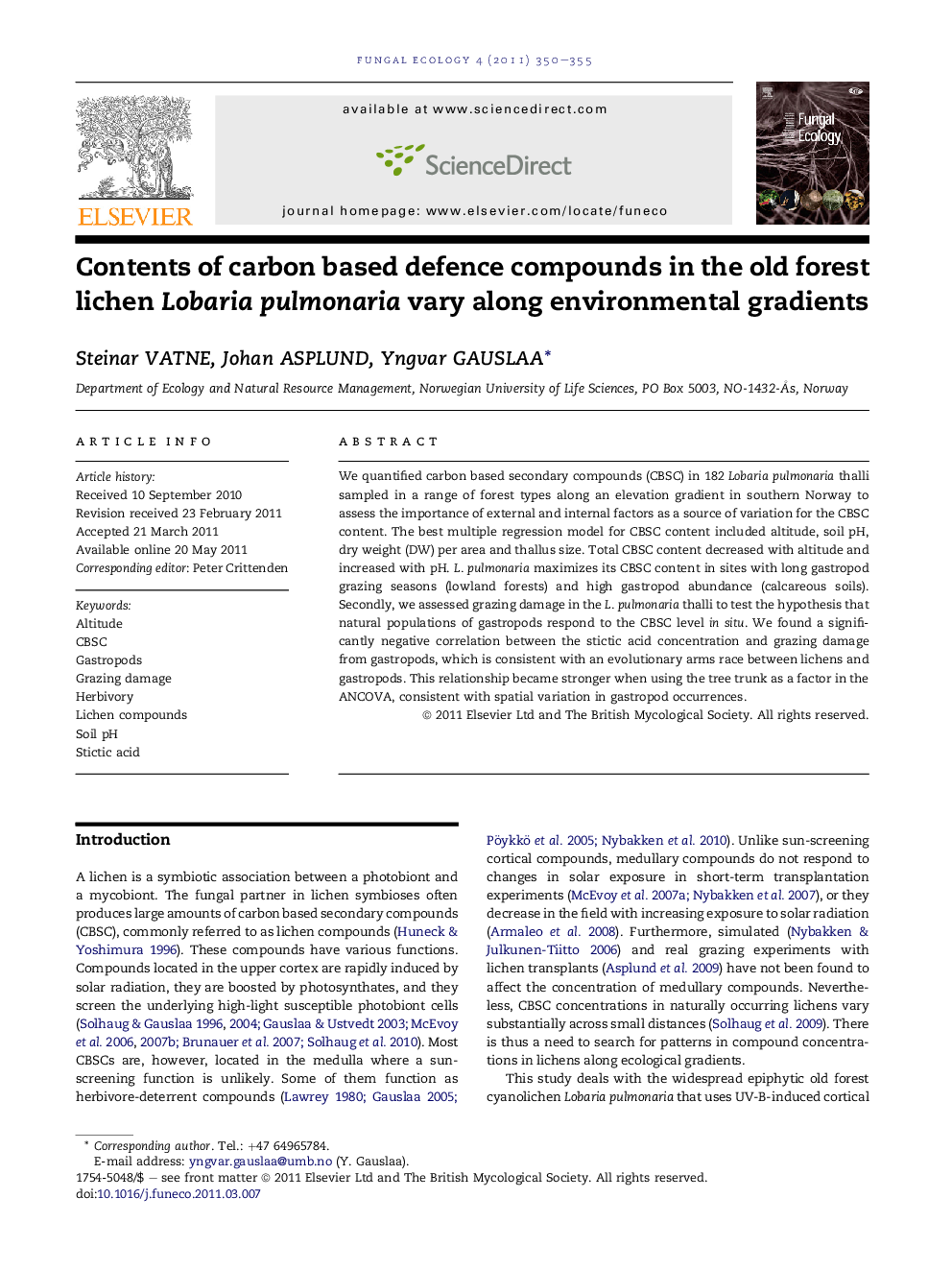| Article ID | Journal | Published Year | Pages | File Type |
|---|---|---|---|---|
| 2053644 | Fungal Ecology | 2011 | 6 Pages |
We quantified carbon based secondary compounds (CBSC) in 182 Lobaria pulmonaria thalli sampled in a range of forest types along an elevation gradient in southern Norway to assess the importance of external and internal factors as a source of variation for the CBSC content. The best multiple regression model for CBSC content included altitude, soil pH, dry weight (DW) per area and thallus size. Total CBSC content decreased with altitude and increased with pH. L. pulmonaria maximizes its CBSC content in sites with long gastropod grazing seasons (lowland forests) and high gastropod abundance (calcareous soils). Secondly, we assessed grazing damage in the L. pulmonaria thalli to test the hypothesis that natural populations of gastropods respond to the CBSC level in situ. We found a significantly negative correlation between the stictic acid concentration and grazing damage from gastropods, which is consistent with an evolutionary arms race between lichens and gastropods. This relationship became stronger when using the tree trunk as a factor in the ANCOVA, consistent with spatial variation in gastropod occurrences.
► We quantified carbon based defence compounds (CBSC) in Lobaria pulmonaria. ► This old forest lichen maximizes CBSC contents at low altitude and at high soil pH. ► Low altitude implies long grazing season; high pH implies many gastropods. ► Increasing stictic acid content reduced gastropod grazing marks in the lichen. ► These data are consistent with an arms race between the lichen and gastropods.
